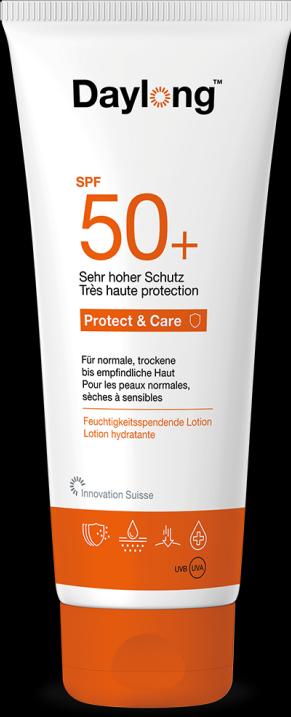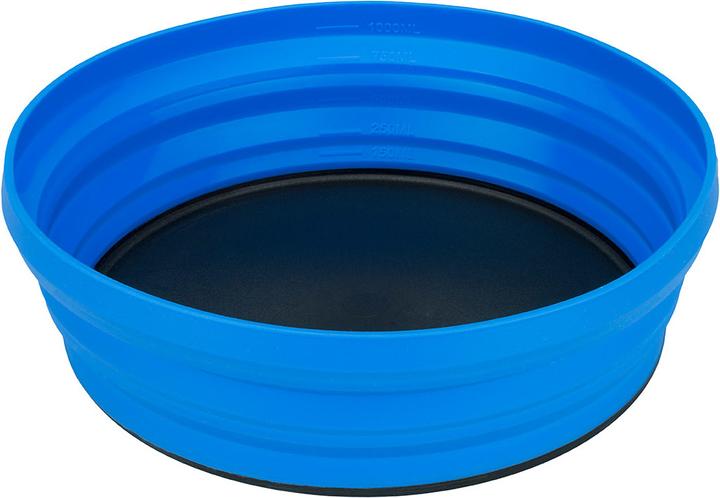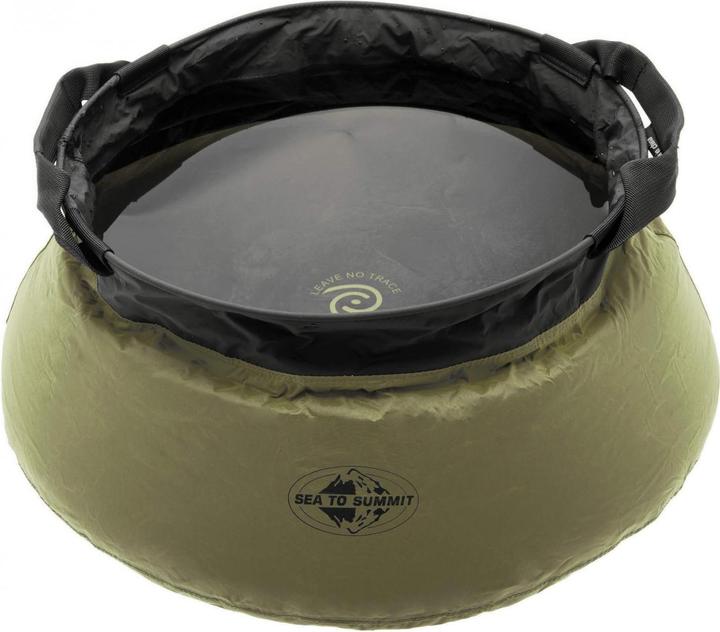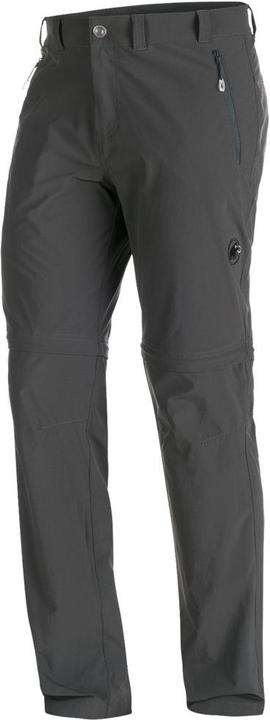
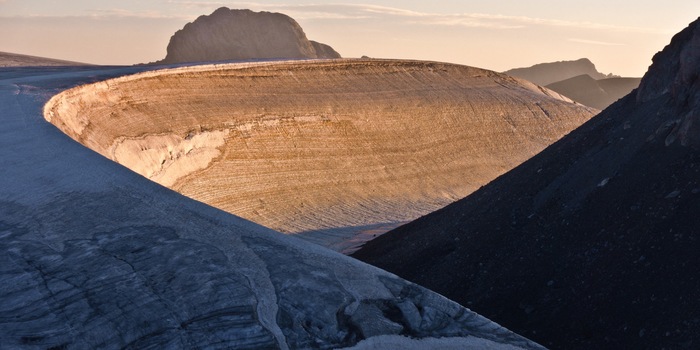
A week in the wilderness above the tree line: what you really need
If you want to go on a real outdoor holiday, you have to take everything you need with you. This raises the question of what is actually necessary. Especially on a hike in steep terrain. Here is an overview of what you need for a week's mountain hiking.
I'm not a trekking and outdoor enthusiast. But I've been going on a big hike with friends every year since 2008. We hike through the Alps for a little over a week and usually spend the night outdoors. We often don't pass a village with a shop for days. So we end up in very remote places. This is not only a wonderful experience of nature, it also allows us to switch off completely. There is often no mobile phone reception in these places to this day.
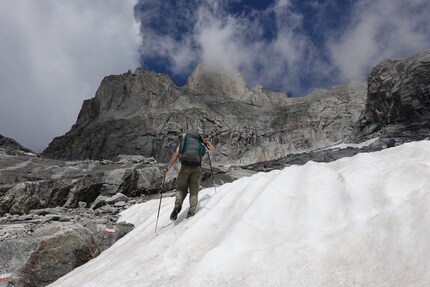
This type of holiday also means that we have to carry a lot of stuff in our rucksacks. If you hike for 8 hours in one day and climb 1000 metres up and down, then it makes a difference whether your rucksack weighs 15 or 18 kilograms. In other words: We think very carefully about what we need and what we don't need. Any mistake, whether you take too little or too much, has an unpleasant effect.
That's why I now know very well which things you really need on such an outdoor tour and which are just "nice to have". I want to share some of these 10 years of experience with you on the hiking trail.
Camping versus bivouacking
But first an important note. You can't just pitch your tent wherever you like. When a group of people camp wild, they leave a trail. It's also a quantity problem. In Switzerland, 3.2 million overnight stays were recorded on campsites last year. If all these people were to camp wild, without sanitary facilities, rubbish bins, etc., then the Swiss mountains would turn into a rubbish dump. There would probably also be forest fires.
In Switzerland, it is permitted to spend the night in the high mountains (above the tree line) and move on the next morning. This is not called camping, but bivouacking. The SAC provides information about the details and provides a leaflet in German, French, Italian and English as a PDF on the linked page. I also received a tip from Thomas Schwager that you should take a look at the Swiss hiking maps to display the forbidden zones directly.
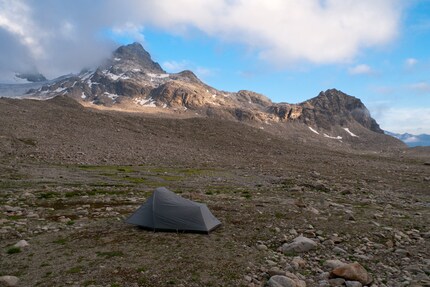
Other countries have different regulations in some cases. In any case, the following applies: consideration and common sense are the be-all and end-all and ultimately decide whether or not you get into trouble when staying overnight in the open air. If possible, leave the site as you found it and take the rubbish with you. Use existing fireplaces. Do not spend the night in nature conservation or hunting ban areas. If there is an alp nearby, ask for permission. The alpine farmers quickly realise whether they are dealing with a horde of vandals or people who show consideration for the environment. We were almost always treated very kindly.
But now to the equipment
Clothes
Farewell to the idea of putting on fresh clothes every day. For one thing, there's no room for it in your rucksack, and for another, you'll constantly stink of sweat and smoke from the fire no matter how often you change your clothes. Most of us use three sets of socks and underwear: two for the trip itself and one for the train journey home. After a week like that, even with fresh laundry, we are an imposition on the other passengers. "Are we actually sitting in a coal wagon here?" once asked a pensioner in the neighbouring compartment. By the way: there are no women on the hike. It's better for everyone.
What you need to bring: Winter clothes. When you're drinking a beer in the shade at 35 degrees before setting off, it's hard to believe that long johns, a hat and gloves are a must. But sharp changes in temperature are typical of the mountains. At altitude, it can get very cold even in the middle of summer when the sun is gone. It once snowed in the evening.
Of course, you need a jumper to keep you warm and a jacket to keep the wind out. Good rain protection is of course a must and can act as an additional wind stopper. It is best to impregnate it with a spray beforehand. Rain protection has no place around the fire, as it will only get burn holes. A rucksack rain cover is also never a bad idea, even if the rucksack is supposedly waterproof.
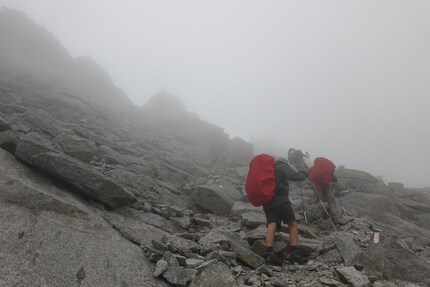
If you are caught in the rain or the weather is persistently bad, it is almost impossible to avoid getting your clothes wet. It is therefore very important that the fabric dries quickly. T-shirts made from synthetic fabrics dry better than those made from cotton. Jeans are very bad, so it's worth buying special outdoor trousers. Then you don't have to take your rain trousers out of your rucksack and put them on every time it rains. That's not a good idea anyway. If you put your rain protection on too often, you'll get wet - from the inside, through sweat.

Shoes: a warning
I'm not a hiking shoe expert and can't help you find the right shoes. But there is something you absolutely need to know because it can get you into big trouble. During our outdoor week, the sole of a shoe that was still in good condition came off twice. Both times on the second day. When that happens, it's all over. You can only hope that the sole will hold up to the next valley with the laces or a strong tape. Quickly re-glue on the go? Not a chance.
The sole won't last any longer if you hardly use the shoes. On the contrary, the material becomes brittle more quickly. A sole can break after just five years. You should therefore definitely try out older shoes for several hours before a big tour in remote areas - of course in an environment where you won't be completely stranded in the event of a repair.
Health and hygiene
At high altitudes, the solar radiation is extreme. That's obvious, but it's easy to forget when it's not so hot. In addition to strong sun cream, you also need UV lipstick. I always wear a sun hat that provides all-round coverage. It makes me look stupid, but that doesn't bother me much. Sunglasses are also essential when walking across a snow field, as they block out light coming from the side.
Of course, we always have an emergency first-aid kit with us. Including medication such as NeoCitran and painkillers. Blisters on our feet are a perennial favourite. Compeed plasters are good, but it's even better to protect critical areas on toes and heels with tape before the skin is broken. Put your shoes on tightly before a descent, then the foot will slip less.
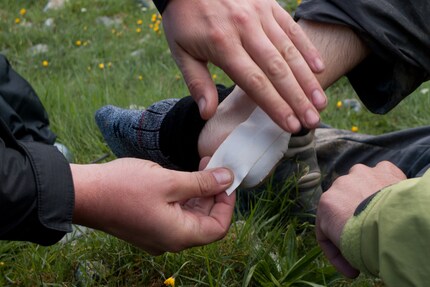
In the 21st century, most people in this country live much more hygienically than is necessary to maintain good health. With this knowledge in mind, you'll be much more relaxed during an outdoor week. Your plate doesn't have to be cleaned completely for every meal. You won't even get diarrhoea. Avoid mountains of tissues and the like. However, I would take a toothbrush with you and toilet paper in case there is no mountain restaurant nearby. Don't just leave the paper lying around, burn it instead.
Overnight stay
Today there are amazingly small and light tents that are nevertheless stable. According to the manufacturer, the tent below weighs just 580 grams. But somehow none of us really trust these wafer-thin tent groundsheets - a tarpaulin against stones, spikes etc. comes with us anyway. And a repair kit.
If you're taking a tarpaulin anyway, you can also consider spending the night outside without a tent. Depending on the weather forecast and route, a bivouac sack and a tarp, i.e. a tent roof with cords and pegs, will suffice. You can use your hiking poles as tent poles. However, tarps are cumbersome in strong winds, so it's much better to sleep in a tent.
Sleeping in the open air with just a sleeping bag is not a good idea. During the night, the ground will get damp from the dew, your sleeping bag will get wet and won't keep you warm enough. A light and stable air mattress is a must when sleeping outdoors to keep the ground cold and level out any unevenness. And a head torch. If you only stay in huts, a sleeping bag is sufficient, which can then be a little lighter.
Food and drink
When we spend the night outside, we cook outdoors - either with a petrol cooker or over a fire.
Pans on the fire must not contain any plastic elements. A pair of old gardening gloves is suitable for handling, and a grill grate provides a stable base. The crockery should be made of plastic - robust but not heavy. Collapsible cups and bowls take up less space in the rucksack.
It is not always possible to find a place to sleep and eat close to the water. Waterproof multifunctional bags are suitable for transporting water from the nearest stream. A self-standing water bag becomes a washing bowl. We boil the water and make tea from it.
The "spork" combines fork and spoon. In English spork (spoon + fork). However, you don't save much space or weight with this combo. I bought a spork and have been using it for years, but to be honest, for me it's a typical example of pointless over-optimisation.
The food is more important. Ready-made soups from the bag are one of the best things for an outdoor hike. They are light, warm you up and replenish lost fluids and salt. Ready-made risotto, pasta or stocki, a highlight of excellent Swiss cuisine, also weigh very little. I can guarantee you that: After a strenuous day as a two-legged mule, you'll devour even the most disdainful ready meals with the greatest of appetites. Hunger is the best cook, and cooking outdoors probably also gives the food a special flavour.
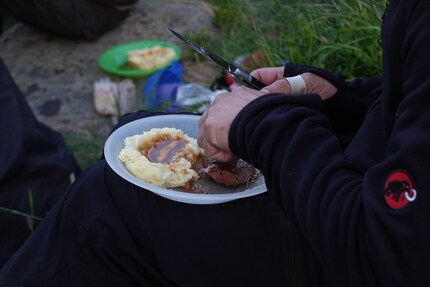
If there is the possibility of a fire, barbecuing is of course the order of the day. The meat lasts a surprisingly long time in the rucksack, at least in the mountains. Any concerns that we might spoil our stomachs with rotten meat that we've been carrying around for days have proved unfounded. And ultimately, barbecuing also provides a certain degree of protection against pathogens.
The barbecue also includes courgettes, corn on the cob, potatoes in aluminium foil, etc. Even if these things are not exactly easy. Speaking of not exactly easy: we have fondue once per hike. Usually when we spend the night at high altitude. The cheese is not only heavy in the rucksack, but also in the stomach and the bread takes up a lot of space, but fondue keeps you warm and, according to unconfirmed rumours, also puts you in a good mood.
In the morning, we choke down porridge, a highlight of excellent British cuisine. With peppermint sauce, cinnamon and pieces of fruit. On the go, nuts, biscuits, chocolate, cheese, bread and dried fruit are all good options. Carbohydrates are important, but overly sweet foods such as glucose only provide energy for a very short time and won't help on a long hike. Some people swear by power bars. They have also helped me to get through the last two hours, but their flavour doesn't quite come close to the glorious British cuisine (i.e. they are simply gruesome).
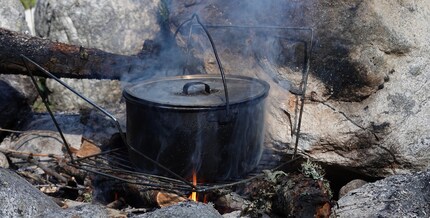
Outdoor coffee consists of instant coffee powder and, depending on the flavour, sugar and milk powder. Condensed milk is too bulky and heavy and makes a sticky mess in your rucksack because the tubes never seal tightly. Powder must be sealed in a tight zip bag (better two to be on the safe side). Really tight plastic containers à la Tupperware also work, but take up a lot of space in the rucksack.
Water on the way, of course. Where there are no cattle grazing far and wide, you can drink from a mountain stream without hesitation. Otherwise, use tablets or drops that kill pests within 30 minutes.
This year, we didn't see a grocery shop all week. But we took the opportunity to fill our bellies in mountain restaurants and refuel with chocolate in mountain huts. Cheese is available on almost every alp. In any case, we had plenty of supplies.
Other things
We still don't use navigation devices, but printed and shrink-wrapped maps. They are lightweight, weatherproof, don't need a battery and are bigger than any screen. The only disadvantage: they don't show you where you are.
Hiking poles are not a must, but I would never go on a long hike without them again. I bought them because I was in constant pain when going downhill due to an old knee injury. With the poles, I can take the strain off my knees. The effort is also distributed over more muscles on the ascent.
I absolutely have to have a camera with me. That's certainly not the case for everyone, I'm just a photo freak. When taking photos with a smartphone these days, it's not so much the image quality that's the problem, but the battery. If you have to carry a power bank with you, you might as well take a compact camera.
Non-smokers need to remember to take lighters. Several. They often break at high altitude. Candle stubs help to get a fire going when it's wet.
A little room for individual quirks
Of course, not everyone has exactly the same views and priorities. One of our group keeps his money in a zip bag to save even the weight of his wallet - but at the same time lugs an extra kilo or two over all his passports so that he can drink beer in the evening. Another takes things with him every year that are clearly just "nice to have": Folding chair, solar panel, or even a saw, a stereo system or some fun decorative lighting. We think that's totally fine, because he's never complained about the extra weight.
And just so we're clear: a correctly adjusted rucksack weighing 20 kilograms is far more comfortable to wear than one that is incorrectly adjusted at 15 kilograms. The main weight must be on the hips, so the hip belt should be buckled tightly. Only a small amount of weight rests on the shoulder straps. However, they still need to be tight, as the rucksack should be as close to the body as possible so that it does not swing back and forth. The strap around the chest must also be tightened for this reason. Heavy items in a rucksack should tend to be lower down and closer to the back. This also reduces swinging movements.
My interest in IT and writing landed me in tech journalism early on (2000). I want to know how we can use technology without being used. Outside of the office, I’m a keen musician who makes up for lacking talent with excessive enthusiasm.
Practical solutions for everyday problems with technology, household hacks and much more.
Show all